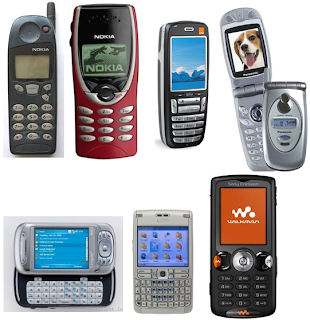This technology into use in 1970 that begins with the use of microprocessors for communications technology. And in 1971, the first mobile phone network opened in Finland called ARP. Following the NMT in Scandinavia in 1981 and AMPS in 1983. The use of analogue technology in the first generation that has caused a lot of limitations such as traffic capacity is small, the number of subscribers that can fit in one little cell, and the wasteful use of frequency spectrum.
On the other hand, the increasing number of customers can not be accommodated first generation. In addition, technology can only serve 1G voice communications, unlike 2G can be used for SMS. NMT Nordic Mobile Telephone or is the analog mobile phone network that was first used internationally in Northern Europe. This network operates at 450 MHz so it is often called the NMT-450, NMT-900 is also operating at 900 MHz.
Given the market demand and the need for better quality, was born the second generation technology, or 2G. This generation is already using digital technology. Technology is another 2G IS-95 CDMA, IS-136 TDMA and PDC. The second generation not only used for voice communications, are also able to SMS and data transfer with a maximum speed of 9600 bps (bits per second). For comparison, the widely used modem for Internet connection speed 56,000 bps (5.6 kbps). Excess 2G than 1G in addition to better service, in terms of capacity is also greater. Due to the 2G, a single frequency can be used several customers using Time Division Multiple Access mechanism (TDMA).
Standard 2G technologies of the most widely used today is a GSM (Global System for Mobile Communication), like most mobile phones used today. GSM operates in the 900, 1800 and 1900 MHz. GSM also supports 14.4 kbps speed data communications.
History
History of GSM started with a conference of postal and telegraph in Europe in 1982. The conference is forming a study group called Groupe Special Mobile (GSM) to study and develop a public communication system in Europe. In 1989, this task is left to the European Telecommunications Standards Institute (ETSI) and the GSM Phase I was launched in mid 1991.
In 1993, there were 36 GSM networks in 22 countries. The uniqueness of GSM compared to first generation SMS service. SMS or Short Message Service is a bidirectional service for sending short messages of 160 characters. GSM currently used has entered phase 2.
After 2G, 2.5 G was born generation which is a better version of the second generation. Generation 2.5 has the ability to transfer data faster. The famous of this generation are GPRS (General Packet Radio Service) and EDGE.
Recently, the trend of mobile communications started to move to the next generation is predicted to be a promising technology of cellular communication. 3rd generation or 3G is the latest technology in the mobile world. This generation is better known as UMTS (Universal Mobile Telecommunications System) or WCDMA (Wideband - coded Division Multiple Access). Excess latest generation of this lies in data transfer speed reaches 384 kbps outdoors and 2 Mbps for indoor applications.
In addition, this generation can provide multimedia services such as internet, video streaming, video telephony, and others better. This third-generation CDMA technology that originally came from the United States military technology and is devoted to the IS-95 standard. Several patents on networks that exist today are based on CDMA technology owned by Qualcomm Inc.., So that equipment makers to pay royalties.
CDMA technology to make the capacity of a cell to be larger than the GSM system because of the CDMA system, each communication call has a specific code that allows many customers use the same radio resources without interference and cross talk interference. Radio source in this case is the frequency and time slots are provided for each cell.
CDMA-based wireless communication system was first used in 1995 and until now, CDMA is the main rival of the GSM system in many countries. In 1999, the International Telecommunication Union (ITU) chose CDMA as a technology standard for third generation (3G). CDMA is widely used variants is the WCDMA and TD-SCDMA.
In May 2001 there were already 35 million CDMA subscribers worldwide. And in 2003, there were 100 million subscribers who use CDMA worldwide. The principal advantage possessed the third generation is the ability to transfer data that fast or have a high bit rate.
The high bit rate CDMA operators have caused many to provide a variety of multimedia applications better and more varied, and the main attraction for customers. Just imagine, only with a mobile phone, we have a camera facility, video, computers, stereos and radios. In addition, various entertainment facilities can be enjoyed as a video clip, traffic conditions in real time, teleconference, even just booked a place in a restaurant, simply by pressing the button on the phone.
When we sit at home too, we still can do many things without having to exit the room, such as checking bank balances, pay college tuition for children, order food and others. That's all it's not impossible for the third generation.
In the long term, CDMA and other technologies such as GSM will be compared based on the total cost per customer of the network infrastructure and mobile aircraft price. With 3G, cheap and qualified communication rather than mere dreams.












